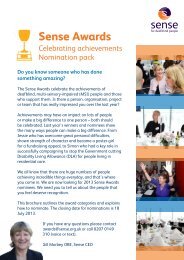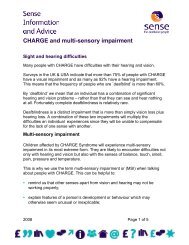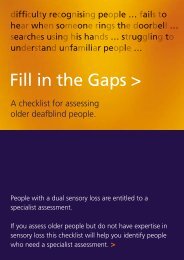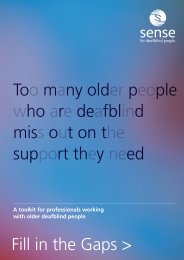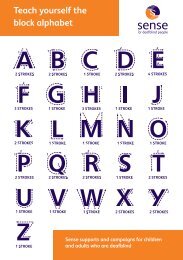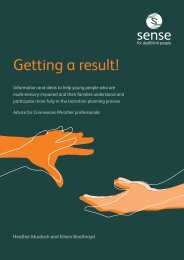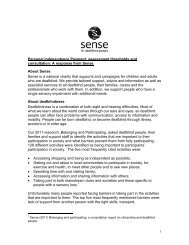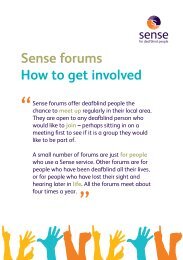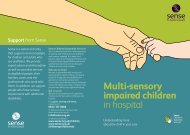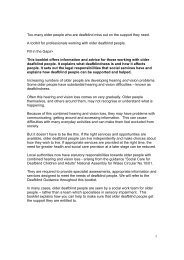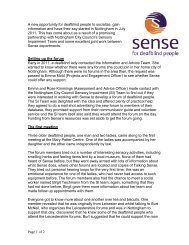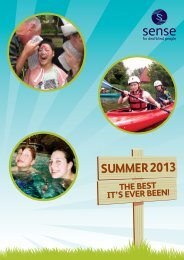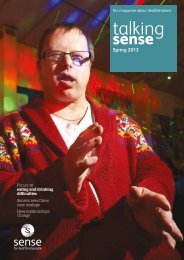MSI Unit Curriculum - Sense
MSI Unit Curriculum - Sense
MSI Unit Curriculum - Sense
You also want an ePaper? Increase the reach of your titles
YUMPU automatically turns print PDFs into web optimized ePapers that Google loves.
<strong>MSI</strong> <strong>Unit</strong> <strong>Curriculum</strong>: Phase 1timetable content changed in line with her abilities. Rather than spending all hergreeting session interacting with Angela, for example, Saima spent some timesitting with Angela, listening to the rest of her class enjoying a group greetingsession (Ownership of learning).Saima followed the same daily timetable at Phase 1 each day except Friday,when she went swimming from 1.30-2.30. This was an activity she enjoyed, in adifferent environment, and marked the transition from the school daily routine tothe family weekend routine.Building relationshipsSaima worked with one main keyworker (Angela) and also with Linda, whocarried out her massage session daily and covered for Angela when necessary(Social relationships and emotional development). Massage was Saima’s leastdemanding activity, and it took place in the middle of the day, when she wasusually secure and calm. Saima began and ended her day with Angela, andchanges to her timetable or interactive space were always introduced andsupported by Angela.In the morning, for example, Angela met Saima at her bus. Together theyenclosed Saima’s hand in Angela’s sleeve, resting on her watch (her personalsignifier). Saima chose when to move her hand (Communication). Only then didAngela push her wheelchair into the school building, moving slowly enough forSaima to trail at her own pace. In the classroom Saima spent a few minutes in herwheelchair, acclimatising and orientating herself, while Angela continued to talkto her. Gentle tugging on her coat sleeve cued Saima to prepare to come out ofher wheelchair (Understanding of time and place). Angela helped her to removeher coat, then supported her to walk to her interactive space for greetings.Saima’s medical condition caused frequent episodes of severe pain. At thesetimes she could not acknowledge anything outside her own body, needingspace and time to confront the pain in her own way. This need has always beenrespected by staff working with her.Initially Saima was not comfortable with sustained interaction, even whenher health was good. Her keyworker stayed within her reach, reading Saima’smovements and signals and responding in a way that Saima could accessand understand (Social relationships and emotional development). Graduallyher tolerance of and then enthusiasm for interaction increased. An earlybreakthrough was in interactive massage, with Saima leading Linda’s hands tothe areas she wished her to touch and massage (Ownership of learning). Saima’ssense of touch is highly sensitive, and her signals in massage were very clear.39



